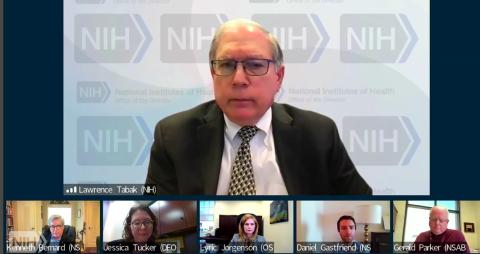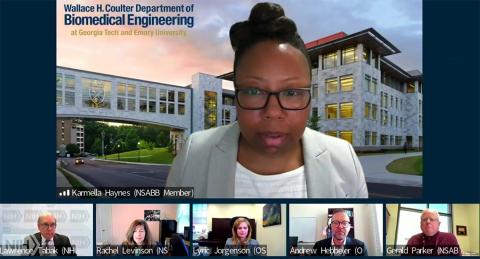NSABB Sets Aggressive Timeline for Committee Charge

Meeting virtually for the first time in 2 years, the National Science Advisory Board for Biosecurity (NSABB) convened on Feb. 28. This was the first meeting of the board since activities were paused due to the rapid escalation of the pandemic to allow members to prioritize Covid-19 research and response activities.
NSABB provides insight to the federal government to help ensure U.S. oversight frameworks are keeping up with rapid advances in science that may raise biosecurity concerns.
NSABB, which is managed by NIH’s Office of Science Policy, addresses issues related to biosecurity and dual-use research. Harnessing lessons learned from the Covid-19 pandemic, the federal government charged NSABB to evaluate policy frameworks for the biosecurity oversight of life sciences research.

“Biosecurity policy considerations are an important component of ongoing efforts to bolster U.S. biodefense and pandemic preparedness,” explained NSABB chair Dr. Gerald Parker, associate dean for Global One Health at Texas A&M University’s College of Veterinary Medicine and Biomedical Sciences. U.S. biosecurity frameworks should “strike the right balance of allowing the benefits of vital research to continue at a rapid pace, while managing the biosecurity risk.”
NSABB will evaluate two policy frameworks overseeing dual use research of concern (DURC) and enhanced pandemic potential pathogens (PPPs).
DURC is a subset of life sciences research that has the greatest potential for generating information that could be readily misused to threaten public health and national security.

DURC policies “serve to preserve the benefits of life sciences…while minimizing risks that the knowledge, information, products or technologies produced could be misapplied to cause significant harm,” explained Dr. Andrew Hebbeler, assistant director for health and life sciences at the White House Office of Science and Technology Policy.
PPPs are likely to be highly transmissible and virulent, with the potential for significant morbidity and/or mortality in humans. Enhanced PPP (or ePPP) is a PPP that results from the alteration of a PPP that can increase a pathogen’s transmissibility and/or virulence. Policies focused on PPP and ePPP research are collectively called potential pandemic pathogen care and oversight (P3CO).
“Research involving agents subject to this oversight helps us understand the fundamental nature of human-pathogen interactions, assess the pandemic potential of emerging infectious agents such as viruses and inform public health and preparedness efforts including surveillance and the development of vaccines and other medical countermeasures,” said acting NIH director Dr. Lawrence Tabak, who gave the board its charge.
The upcoming review process will be undertaken by NSABB working groups and informed by listening sessions with the public and other relevant stakeholders. The scope and effectiveness of current P3CO policies are first up to be reviewed. The evaluation will consider questions such as, should wild-type pathogens and animal models of transmissibility be considered within the scope? And what are considerations for supporting ePPP research internationally?
The second step of the review process will take on two tasks: analyzing and evaluating federal and institutional DURC policies, and possible P3CO guidance incorporation into frameworks associated with any recommended revisions of the DURC policies. Leadership hopes to have the review completed by the end of the calendar year.
This timeline is aggressive, Parker conceded, but the NSABB’s “incredible breadth of experience and expertise” gave him confidence. The review is important, he concluded, for making sure research “is done in a safe, secure and responsible way” while also keeping up with the rest of the world.
